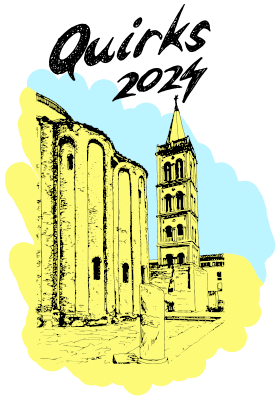Getting to Zadar
https://www.zadar-airport.hr/destinacije
The city of Zadar is an easily reached destination by land, sea and air. It has a good traffic infrastructure through which it is directly connected to other bigger cities of the Republic of Croatia: Zagreb, Rijeka, Split and Dubrovnik. Whichever way you want to reach Zadar, the natural beauty of the landscape will not leave you equanimous.
By airplane
Zadar Airport Zemunik (ZAD) has good connections with most cities in Europe and Croatia. It is situated 20 minutes from the city centre and there are several ways to reach it.
By car
There are few roads that lead to Zadar, but we recommend highway A1 (route Zagreb-Split). You should take exit Zadar istok (Zadar east) or Zadar zapad (Zadar west).
By ferry
If you are coming from Italy, the shortest possible route is through Ancona by ferry to Zadar. The journey lasts about 8 hours (departure is normally at 22:00 and arrival at 06:00) and the advantage of such a trip is that it is much more pleasant and you are under less stress.
More information can be found at Jadrolinija website.
By bus
Zadar is the centre of north Dalmatia and very well connected with other Croatian and bigger European towns.
More information about buses can be found at Liburnija website.
In Zadar
More information can be found on Zadar Tourist Board webpage.
Tourist Information Centre
+385 23 316 166
info@zadar.travel
Old City Map
About Zadar
The conference will be held in Zadar, a city of exceptional history and rich cultural heritage. Zadar is a city-monument, surrounded by historical ramparts, a treasury of archaeological and monumental riches from ancient and medieval times, Renaissance and many contemporary architectural achievements such as the first sea organ in the world.
Situated in the heart of the Adriatic, Zadar is the urban center of northern Dalmatia as administrative, economic, cultural and political center of the region with 75,000 inhabitants. The coast is particularly indented, the islands and the untouched nature allures many boaters to this regions. The archipelago counts 24 bigger and about 300 smaller islets and rocks, 3 nature parks - Telašćica, Velebit and Vransko jezero and 5 national parks - Paklenica, Plitvice lakes, Kornati Islands, Krka and Sjeverni Velebit classifying Zadar and its surroundings at the very top of the Croatian tourist offer.
Zadar is an ancient city, built in the center of the Croatian Adriatic. It is three thousand years old, a city of old, tumultuous and dynamic history, often destructed, looted, devastated, every time emerging from the ruins stronger and more beautiful. The cultural and historical heritage of Zadar from the most ancient to recent times is very rich and valuable. Remains from ancient times, from the early Christian period to the early Middle Ages can be found in Zadar. Numerous cultural and historical monuments are worth seeing for they are witness of hundreds of years of culture.
The marble, traffic-free streets in the Old Town of Zadar follow the old Roman street plan and still contain some Roman ruins and several medieval churches. Massive 16th-century fortifications still shield the city on the landward side, with high walls running along the harbour. The Old Town has been rebuilt many times, leaving it with a curious combination of traditional houses and modern constructions.
The most famous monument and a symbol of the city is the church of Saint Donat from early medieval times - a magnificent monument of early Byzantine architecture. The church was built on the pavement of Forum - the main square of an ancient Roman settlement dating back to 1st century BC. The main street of Zadar is called Kalelarga, the heart and soul of the city. It runs from Forum in the west to People's square in the east.
A modern icon of the city is the famous Sea organ. It is located on the Zadar waterfront. This unique instrument can be recognized as 230 feet of steps descending to the sea. The steps hide within 35 tubes of different length, making a total of 7 accords of 5 notes. The movement of the waves runs air through these tubes, creating a natural symphony.
The same artist also created the Greeting to the Sun, a large disc of solar-powered cells.Simultaneously with the sunset the lighting elements installed in a circle turn on, and, following a particularly programmed scenario, they produce a marvelous and impressive show of light in the rhythm of the waves and the sounds of the Sea organs. This site is a blend of human ideas and skills and the energy of the sea, waves and tide. Be sure not to miss the Zadar sunset accompanied by the concert of the sea, and the harmonically changing colours of the Greeting to the sun.

